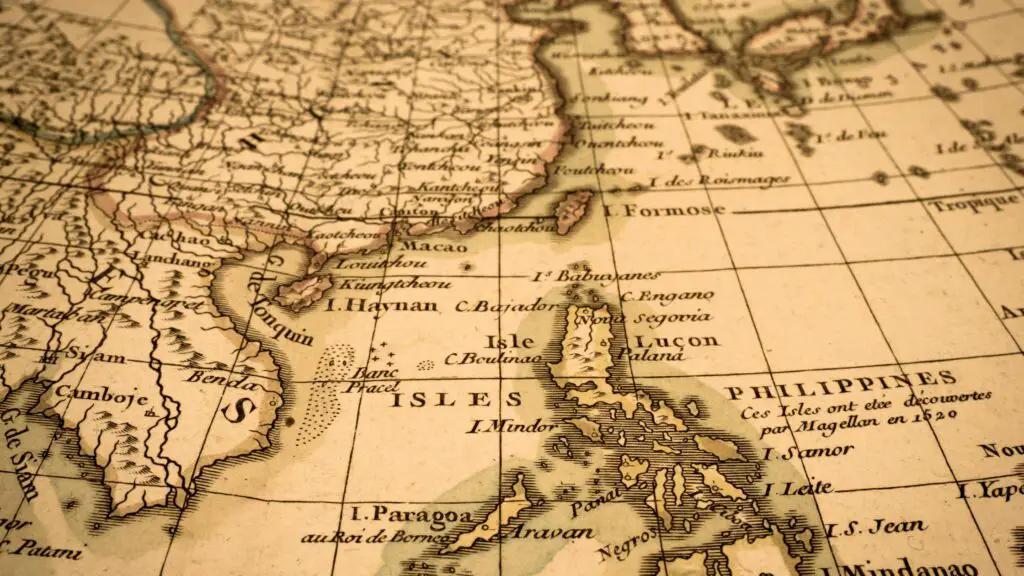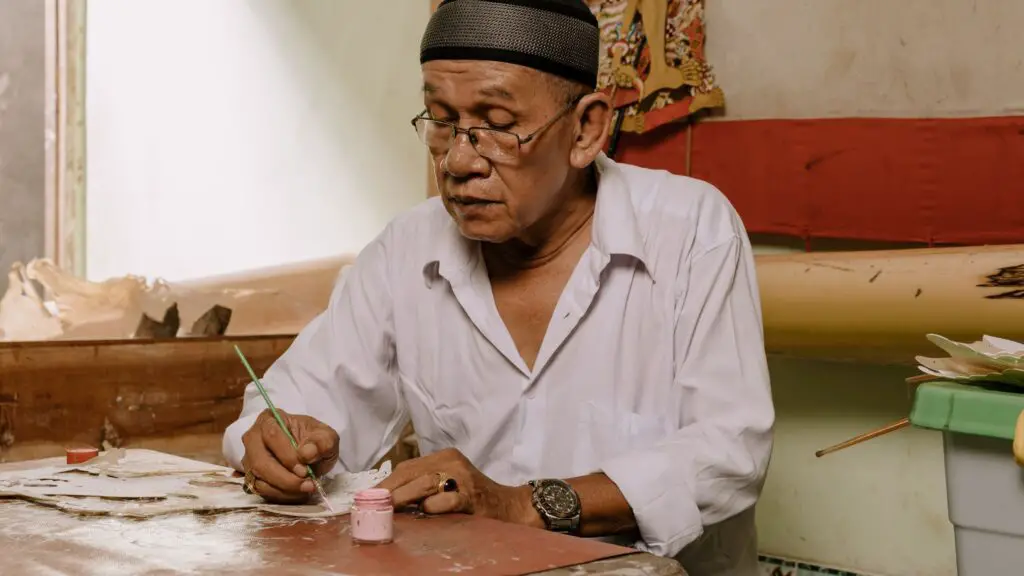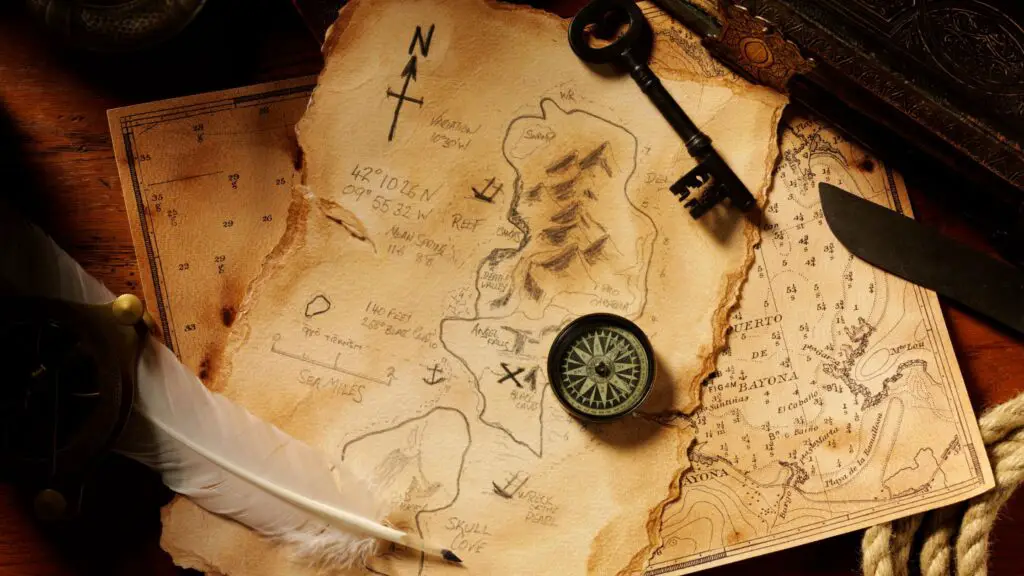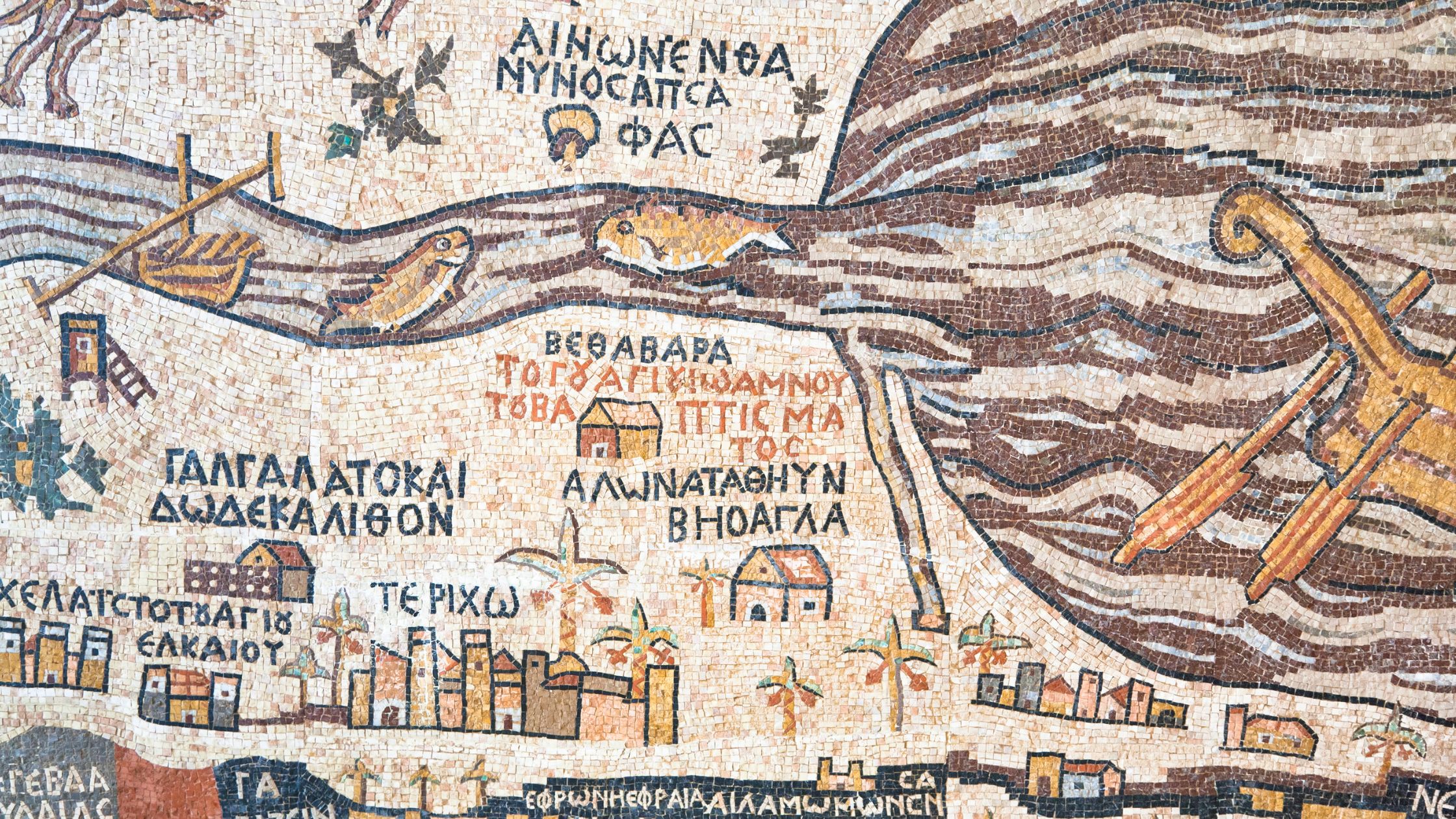Welcome to a journey through time and space as we delve into the captivating realm of antique maps. These ancient cartographic marvels not only serve as navigational tools but also as windows into the past, offering glimpses of how our ancestors perceived and explored the world. With their intricate details, exquisite artistry, and rich historical significance, antique maps possess an allure that transcends mere geography. In this article, we will unravel the mysteries and treasures hidden within antique maps, exploring their fascinating history, the artistry behind their creation, practical tips for collectors, preservation techniques, modern-day applications, and where to uncover these relics of the past. Join us as we embark on an unforgettable voyage to discover the enduring allure of antique maps.
The History of Antique Maps

Origins of Cartography
The story of antique maps begins with the origins of cartography, the science and art of mapmaking. Dating back thousands of years, humans have always sought to understand and represent the world around them. From the earliest crude sketches on cave walls to the meticulously detailed maps of the ancient Greeks and Romans, cartography has evolved alongside human civilization. These early maps, often depicting local terrain or celestial bodies, laid the foundation for the intricate maps we admire today.
Example: The Babylonian Map of the World, dating back to the 6th century BCE, is one of the earliest known world maps, portraying the world as a flat disk surrounded by water.
Evolution of Mapmaking Techniques
As civilizations expanded and exploration flourished, so too did the techniques of mapmaking. From the use of compasses and astrolabes to determine direction and latitude, to the invention of the printing press, which revolutionized the mass production of maps, each advancement in technology brought new levels of accuracy and detail to cartography. The painstaking craftsmanship required to create these early maps is a testament to the dedication and ingenuity of historical cartographers.
Example: The Ptolemaic maps, based on the work of the ancient Greek geographer Ptolemy, were among the first to use latitude and longitude lines to accurately plot locations on a grid.
Notable Historical Cartographers and Their Contributions
Throughout history, several visionary cartographers have left an indelible mark on the world of mapmaking. From Gerardus Mercator, whose projection method revolutionized navigation, to Abraham Ortelius, the creator of the first modern atlas, these pioneers pushed the boundaries of cartographic knowledge and inspired generations of mapmakers to come.
Example: Leonardo da Vinci, renowned for his artistic genius, also made significant contributions to cartography with his detailed maps of Italian cities and regions.
Impact of Antique Maps on Exploration and Navigation
Antique maps played a crucial role in shaping the course of human exploration and navigation. From guiding early explorers across uncharted seas to aiding in the discovery of new lands and trade routes, these maps were invaluable tools for adventurers and merchants alike. The legacy of antique maps lives on in the exploration of distant lands and the navigation of modern-day seas.
Example: The maps created by explorers such as Christopher Columbus and Ferdinand Magellan not only documented their voyages but also influenced future expeditions and discoveries.
The Artistry of Antique Maps

Intricate Details and Craftsmanship
One of the most captivating aspects of antique maps is the meticulous attention to detail and craftsmanship exhibited by their creators. From hand-drawn coastlines to delicately engraved illustrations, each map is a work of art in its own right. Cartographers painstakingly recorded geographical features, landmarks, and even mythical creatures, imbuing their maps with both practical information and aesthetic appeal.
Example: The 16th-century maps of Dutch cartographer Willem Janszoon Blaeu are renowned for their exquisite detail and vibrant color palettes, showcasing the artistic skill and precision of the era.
Use of Color, Typography, and Illustrations
Antique maps are not only functional navigational aids but also visual masterpieces. The use of color, typography, and illustrations served both practical and aesthetic purposes, enhancing readability and conveying information in a visually engaging manner. Vibrant hues delineated political boundaries, while elegant fonts and decorative cartouches adorned the map’s margins, adding to its beauty and sophistication.
Example: The Renaissance-era maps of Italian cartographer Giovanni Battista Ramusio are renowned for their elegant typography and elaborate decorative elements, reflecting the artistic sensibilities of the period.
Comparison of Different Map Styles and Regions
Throughout history, various regions and cultures have developed distinct styles and techniques of mapmaking, each reflecting its unique geographical, cultural, and artistic influences. From the ornate maps of Renaissance Europe to the minimalist charts of ancient China, exploring different map styles offers a fascinating glimpse into the diversity of cartographic traditions around the world.
Example: The Japanese Edo period maps, known as “Edo-zu,” are characterized by their meticulous attention to detail and vibrant color schemes, depicting the bustling streets and landmarks of feudal Japan with unparalleled precision.
In the next section, we will delve into the world of collecting antique maps, exploring the growing interest in these historical treasures and offering practical tips for enthusiasts.
Collecting Antique Maps

Growing Interest in Antique Map Collecting
In recent years, there has been a surge of interest in collecting antique maps, fueled by a fascination with history, exploration, and the artistry of cartography. Collectors are drawn to the tangible connection to the past that antique maps provide, offering a glimpse into bygone eras and the evolving understanding of the world. As awareness of the cultural and historical significance of antique maps grows, so too does the enthusiasm for acquiring these unique and precious artifacts.
Example: The annual Old Map Fair in London attracts collectors and enthusiasts from around the world, showcasing a diverse array of antique maps spanning centuries of cartographic history.
Factors Influencing the Value of Antique Maps
Several factors influence the value of antique maps, including rarity, age, condition, historical significance, and provenance. Maps depicting significant historical events or regions of exploration are often highly sought after, as are those produced by renowned cartographers or featuring intricate artistic embellishments. Additionally, the condition of the map, including its preservation and any restoration work, can significantly impact its value to collectors.
Example: A rare map depicting the newly discovered Americas by 16th-century cartographer Martin Waldseemüller sold at auction for millions of dollars, highlighting the premium placed on historical significance and rarity in the antique map market.
Tips for Starting an Antique Map Collection
For those eager to embark on their own journey into the world of antique map collecting, there are several tips to keep in mind. Begin by researching different regions, styles, and periods of cartography to determine your areas of interest. Visit antique shops, online auctions, and map fairs to browse a wide selection of maps and familiarize yourself with pricing and quality. Consider starting with more affordable pieces and gradually expanding your collection as your knowledge and budget allow. Finally, invest in proper storage and preservation materials to ensure the longevity of your cherished maps.
Example: Renowned antique map collector David Rumsey advises newcomers to focus on acquiring maps that resonate with them personally, whether for their historical significance, aesthetic appeal, or personal connection to a particular region or era.
In the following section, we will explore the importance of preservation and conservation in maintaining the beauty and integrity of antique maps for future generations.
Preservation and Conservation
Importance of Preserving Antique Maps
Preserving antique maps is not just a matter of maintaining their aesthetic appeal; it is also crucial for safeguarding valuable historical and cultural artifacts for future generations. These maps serve as tangible links to the past, offering invaluable insights into the geographical knowledge, exploration, and societal norms of bygone eras. By preserving antique maps, we ensure that these treasures continue to inspire and educate for centuries to come.
Example: The British Library’s Map Collections house a vast archive of antique maps spanning centuries, meticulously preserved and cared for to ensure their longevity and accessibility to researchers and the public alike.
Common Issues Affecting Antique Maps
Antique maps are vulnerable to a variety of environmental, physical, and chemical threats that can degrade their condition over time. Factors such as exposure to light, fluctuations in temperature and humidity, pests, and improper handling can all contribute to deterioration. Additionally, the materials used in the production of antique maps, such as paper, ink, and pigments, may degrade or become brittle with age, further compromising their integrity.
Example: Foxing, the reddish-brown spots that often appear on antique paper, is caused by fungal growth and can significantly detract from the visual appeal and structural stability of a map if left untreated.
Techniques for Preserving and Caring for Antique Maps
Proper preservation and care are essential for prolonging the life of antique maps and maintaining their condition for future generations to enjoy. Store maps in a cool, dry environment away from direct sunlight and fluctuations in temperature and humidity. Handle maps with clean hands or gloves to prevent oils and dirt from transferring onto the paper. Consider framing maps using archival materials to provide additional protection from environmental hazards. If conservation treatment is needed, consult a professional conservator with experience in working with paper-based artifacts.
Example: The Library of Congress provides comprehensive guidelines for the care and handling of antique maps, including recommendations for storage, display, and conservation techniques to ensure the long-term preservation of these valuable cultural resources.
In the next section, we will explore the diverse applications of antique maps in the modern world, from academic research to decorative interior design.
Applications of Antique Maps Today

Use of Antique Maps in Research and Education
Antique maps serve as invaluable resources for scholars, historians, and educators, offering unique insights into the geographical, political, and cultural landscapes of the past. From tracing the evolution of territorial boundaries to studying the impact of exploration and colonization, antique maps provide a wealth of information for researchers across various disciplines. In educational settings, antique maps offer engaging visual aids for teaching geography, history, and cartography, fostering a deeper understanding of the world and its complexities.
Example: The David Rumsey Map Collection, an online repository of over 150,000 historical maps, provides researchers and educators with access to a vast array of cartographic treasures for study and analysis.
Decorative and Aesthetic Value in Interior Design
Beyond their scholarly and educational significance, antique maps also hold immense decorative and aesthetic value, adding a touch of elegance and sophistication to interior spaces. Whether displayed individually as focal points or curated into gallery walls, antique maps serve as captivating conversation pieces that reflect the unique tastes and interests of their owners. From vintage globes to framed map prints, incorporating antique maps into interior design allows enthusiasts to infuse their living spaces with a sense of history and adventure.
Example: Designers and decorators often use antique maps as statement pieces in eclectic, vintage-inspired interiors, pairing them with antique furnishings and accessories to create curated spaces with character and charm.
Role of Antique Maps in Cultural Heritage Preservation
Antique maps play a vital role in preserving and promoting cultural heritage, serving as tangible reminders of the diverse landscapes, peoples, and histories that have shaped our world. By digitizing and cataloging antique maps, cultural institutions and heritage organizations can make these valuable resources accessible to a global audience, fostering appreciation for the rich tapestry of human experience. Additionally, initiatives aimed at documenting and conserving historic maps help safeguard these precious artifacts for future generations, ensuring that their stories continue to be told.
Example: The World Digital Library, a collaborative project of UNESCO and the Library of Congress, provides online access to thousands of digitized cultural artifacts, including antique maps, for educational and cultural enrichment worldwide.
In the following section, we will explore where to find antique maps, from online marketplaces to specialized dealers and institutions.
Where to Find Antique Maps

Online Resources and Auction Houses
The internet has revolutionized the way antique maps are bought and sold, providing access to a vast array of maps from around the world with just a few clicks. Online marketplaces and auction houses offer a wide selection of antique maps, ranging from rare cartographic treasures to affordable reproductions. Websites specializing in antique maps often feature detailed descriptions, photographs, and pricing information, making it easy for collectors to browse and purchase maps from the comfort of their own homes.
Example: Websites like Old World Auctions and Barry Lawrence Ruderman Antique Maps Inc. regularly host online auctions featuring a diverse selection of antique maps, attracting collectors and enthusiasts from across the globe.
Antique Shops and Flea Markets
For those who prefer a hands-on approach to collecting, antique shops and flea markets can be treasure troves of hidden gems waiting to be discovered. Many antique dealers specialize in vintage maps and prints, offering unique finds at affordable prices. Browsing through the shelves of an antique shop or rummaging through the stalls of a flea market can be a rewarding experience, providing an opportunity to stumble upon rare maps and uncover unexpected treasures.
Example: The Portobello Road Market in London is renowned for its eclectic mix of vendors selling everything from antique furniture to vintage clothing, including a variety of antique map dealers offering maps from different periods and regions.
Museums and Libraries
Museums and libraries are invaluable resources for studying and appreciating antique maps, often housing extensive collections of rare and historically significant maps. Many museums and libraries offer public access to their map collections through exhibitions, research libraries, or online digital archives, allowing visitors to explore maps firsthand and learn about their cultural and historical significance. Some institutions also offer reproduction services, allowing visitors to purchase high-quality replicas of their favorite maps.
Example: The Map Division of the New York Public Library boasts one of the largest map collections in the world, featuring over 400,000 maps spanning six centuries of cartographic history, with many maps available for viewing online or in person by appointment.
By leveraging these diverse resources, collectors and enthusiasts can embark on a rewarding journey to uncovering the allure of antique maps and adding these historical treasures to their collections.
Conclusion
Throughout history, antique maps have captured the imagination and curiosity of generations, serving as windows into the past and testaments to human exploration and ingenuity. From their intricate details and artistic craftsmanship to their invaluable historical and cultural significance, antique maps continue to fascinate and inspire collectors, scholars, and enthusiasts alike.
As we’ve journeyed through the rich tapestry of antique maps, it’s clear that their allure knows no bounds. Whether as tools for navigation, sources of artistic inspiration, or symbols of cultural heritage, antique maps hold a timeless appeal that transcends geography and time. Their enduring legacy reminds us of the boundless possibilities of human imagination and the profound connection we share with the world around us.
For those intrigued by the allure of antique maps, there has never been a better time to explore this captivating world. Whether you’re a seasoned collector or a curious newcomer, there are endless opportunities to discover and appreciate the beauty and significance of antique maps. So why not embark on your own journey of exploration and discovery? Dive into the fascinating realm of antique maps and uncover the stories, secrets, and treasures they hold.
We invite you to continue your exploration of historical treasures by discovering the timeless beauty of antique paintings. Explore our collection at Nex Antique Paintings and immerse yourself in the artistry and history of centuries past.
Embrace the allure of antique maps and let their timeless charm guide you on a journey of discovery and wonder.

Leave a Reply